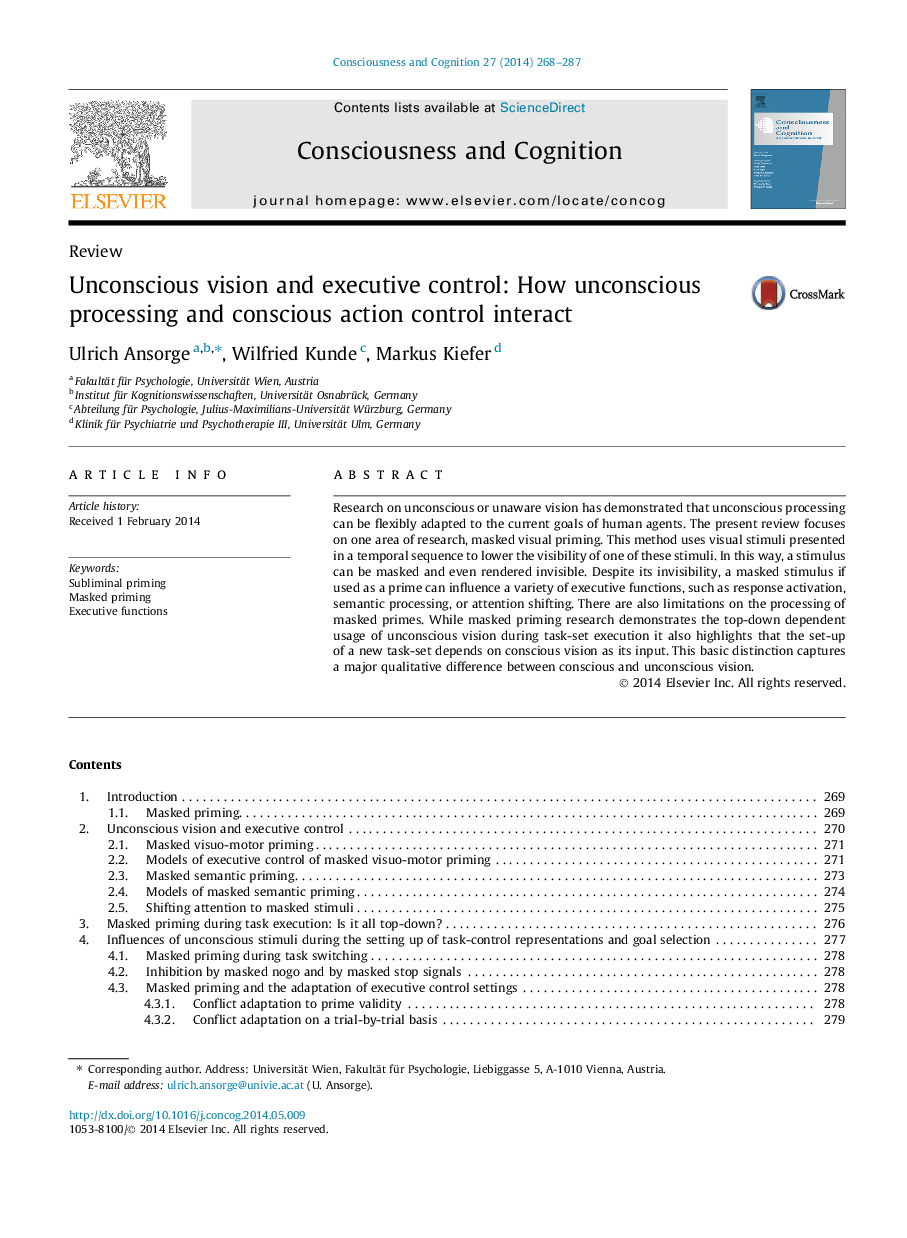| Article ID | Journal | Published Year | Pages | File Type |
|---|---|---|---|---|
| 7290079 | Consciousness and Cognition | 2014 | 20 Pages |
Abstract
Research on unconscious or unaware vision has demonstrated that unconscious processing can be flexibly adapted to the current goals of human agents. The present review focuses on one area of research, masked visual priming. This method uses visual stimuli presented in a temporal sequence to lower the visibility of one of these stimuli. In this way, a stimulus can be masked and even rendered invisible. Despite its invisibility, a masked stimulus if used as a prime can influence a variety of executive functions, such as response activation, semantic processing, or attention shifting. There are also limitations on the processing of masked primes. While masked priming research demonstrates the top-down dependent usage of unconscious vision during task-set execution it also highlights that the set-up of a new task-set depends on conscious vision as its input. This basic distinction captures a major qualitative difference between conscious and unconscious vision.
Related Topics
Life Sciences
Neuroscience
Cognitive Neuroscience
Authors
Ulrich Ansorge, Wilfried Kunde, Markus Kiefer,
